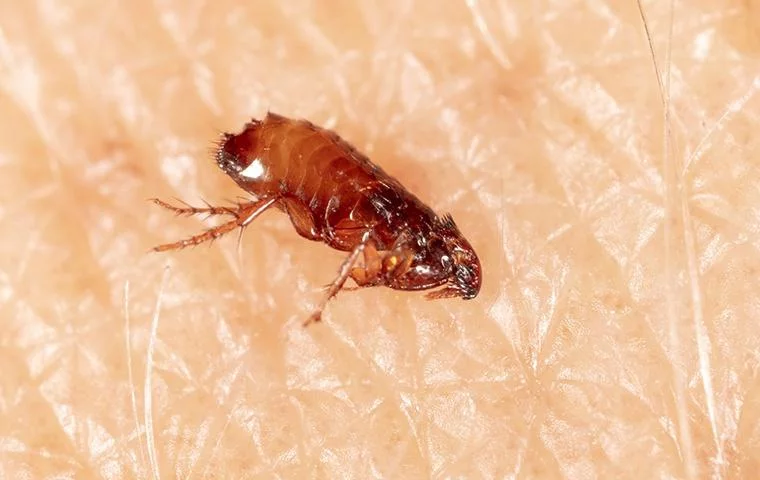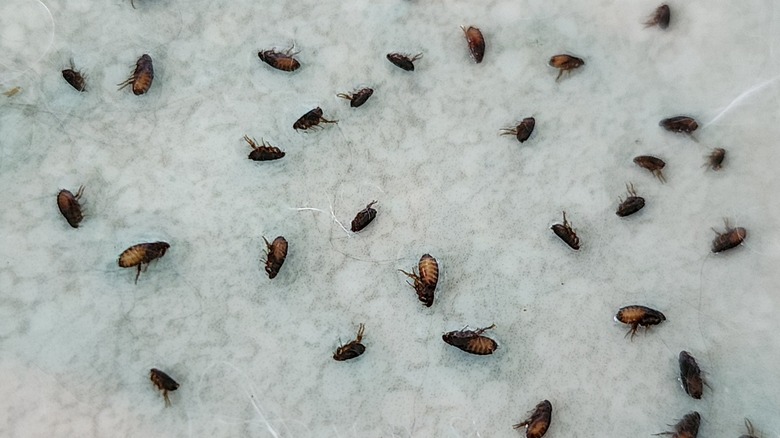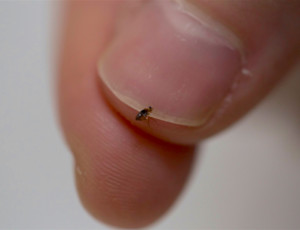Flea Treatments in Florida
Exterminator Services for Coral Springs, Margate, and Coconut Creek
Florida’s balmy subtropical climate, recognized for gentle winters and steady warmth, appeals not only to residents but also to various pests—chief among them, fleas. These minuscule, jumping insects feed on the blood of warm-blooded hosts—most often pets, yet they will bite humans if necessary. In Coral Springs, as well as the neighboring communities of Margate and Coconut Creek, a minor flea intrusion can escalate quickly, resulting in itchy bites, potential disease transmission, and occupant irritation if not confronted. This service page explores why fleas thrive in Florida’s environment, the signs that suggest you have a flea problem, and why a professional flea exterminator for flea treatments is the most direct route to a property free of these intrusive pests. By responding swiftly at the first hint of fleas, you can spare your household or business from ongoing distress, prevent incessant occupant complaints, and shield your pets from persistent scratching or secondary health complications.
Why Fleas Thrive in Florida

- Mild Winter Temperatures
Colder regions typically benefit from sub-freezing weather that diminishes flea numbers or pushes them into dormancy. Florida’s winter seldom remains cold enough for extended periods to harm flea populations. Even short temperature dips are rarely severe enough, allowing fleas to remain active indoors year-round if occupant attention is lacking. - High Humidity and Rainfall
Flea eggs, larvae, and pupae depend on moderate moisture to develop successfully. Florida’s consistent humidity and rainfall keep lawn edges, shaded corners, or leaf piles damp. Under these conditions, fleas find stable, humid habitats where they hatch, mature, and wait for warm-blooded hosts—like cats, dogs, or stray wildlife—to pass by. - Minimal Seasonal Downtime
In cooler states, fleas face partial dormancy when winters freeze the ground and hamper host activity. Southwest Florida, by contrast, sees no such enforced dormancy, letting fleas reproduce steadily. A small group of fleas can blossom into a large infestation swiftly if occupant vacuuming, yard checks, or pest interventions remain overlooked. - Plentiful Hosts—Pets and Wildlife
Fleas feed primarily on animals, from domestic dogs and cats to wild creatures crossing yards. Pets lacking consistent flea preventatives can pick up adult fleas outdoors, inadvertently carrying them indoors. If fleas slip onto carpets or furniture, they can deposit eggs that hatch in hidden corners, fueling the cycle. - Frequent Human Movement
In communities like Coral Springs, Margate, and Coconut Creek, occupant or traveler transitions can transport fleas in luggage, secondhand furniture, or personal items. A single egg-bearing flea can start a new colony if occupant measures—like frequent vacuuming or quarantining used items—do not intercept it early.
Signs of a Flea Infestation
- Pets Excessively Itching or Grooming
Fleas cause intense itching in cats and dogs, prompting them to scratch or bite their fur—especially around the belly, hindquarters, or neck. Some pets develop bald patches from constant grooming or red, inflamed skin if they have flea allergy dermatitis. Checking your pet’s coat with a flea comb often reveals small, dark bugs scurrying or “flea dirt” (flea droppings) that turn red when moistened. - Bites on Humans
Flea bites typically appear on ankles or lower legs as tiny, itchy red welts, often grouped in lines or clusters. Occupants frequently realize a flea problem if these bites persist despite minimal contact with mosquitoes or other biting insects. Inspecting floors and pet areas can confirm fleas are the culprit. - Flea Dirt in Pet Bedding
Flea dirt—blackish specks resembling coarse black pepper—may collect in pet bedding, on carpets, or near corners. When placed on a damp cloth, these specks dissolve into a red-brown color, indicating digested blood from fleas feeding on your pet. Confirming flea dirt means fleas actively feed nearby. - Seeing Fleas on Floors or Furniture
Adult fleas often jump if occupants disturb them, making them visible as small, dark insects leaping across carpets, sofa cushions, or near pet crates. Spotting just a few typically means more exist in deeper layers or hidden spots. Swift occupant or professional intervention curbs further hatching or expansions. - Pet Avoidance of Certain Areas
If your dog or cat suddenly refuses a previously favored corner or bed, it may sense fleas or eggs entrenched there. Investigating that location might reveal adult fleas waiting for a host. Quick occupant or exterminator action—like deep cleaning or insect growth regulators—stops fleas from developing further.
Why Prompt Flea Treatments Are Critical
- Possible Disease Transmission
While fleas are not the most notorious disease carriers, they can harbor parasites like tapeworms that can infect animals or, occasionally, humans. Fleas feeding on multiple hosts risk spreading pathogens more widely. Eliminating fleas at an early stage significantly lessens health concerns for all occupants. - Pet Discomfort and Potential Vet Costs
Persistent flea bites distress pets. Heavy infestations may cause anemia in smaller animals or flea allergy dermatitis requiring veterinary care. Removing fleas promptly spares animals from chronic irritation or infection risks, saving owners from potential vet bills and ongoing stress. - Spreading to Neighbors
In multi-family living or closely spaced neighborhoods, fleas might move from one yard to another if occupant strategies remain incomplete. Early occupant or building-wide steps ensure fleas do not leap or hitch rides, establishing themselves in additional spaces.
Continuous Occupant Stress
Coexisting with fleas can generate occupant anxiety over repeated bites or the possibility of fleas creeping onto furniture and clothing. Comprehensive elimination calms these fears, restoring occupant confidence in a comfortable home or workspace.

Why a Professional Exterminator Makes a Difference
- Complete Indoor-Outdoor Assessment
A flea exterminator evaluates both the inside—checking carpet edges, pet beds, or behind furniture—and outside—fence lines, yard corners, shady foliage—for flea hotspots. Mapping out where eggs, larvae, or adult fleas lurk shapes an integrated plan that addresses every stage and location. - Safe, Targeted Applications
Overusing do-it-yourself foggers can oversaturate living areas with chemicals while missing fleas hidden in corners or deep yard pockets. Professionals place insect growth regulators, adulticides, or larvicides precisely where fleas hatch or feed, ensuring lethal exposure with minimal occupant or pet risk. - Multi-Stage Lifecycle Control
Fleas have four stages: egg, larva, pupa, adult. Missing pupae or newly laid eggs can lead to re-emergence days or weeks after occupant attempts. Exterminators combine yard sprays, insect growth regulators, thorough vacuuming, and occupant-based laundry routines to eradicate fleas comprehensively. - Pet Coordination
Occupants must coordinate with veterinarians so dogs or cats remain on monthly flea preventatives—collars, topicals, or chewables. Without pet synergy, new fleas from local parks or neighboring lawns re-infiltrate indoors, undermining prior treatments. - Follow-Up Confirmation
Because fleas can stay dormant or pupate out of reach initially, occupant or professional re-checks confirm no newly hatched fleas remain. If occupant sightings or fresh bites persist, additional treatments ensure occupant relief.
Methods Deployed by a Flea Exterminator
- Vacuuming and Steam Indoors
Vacuuming collects adult fleas and eggs from carpets, rugs, and pet bedding. Occupants discard vacuum contents in sealed plastic outside to prevent fleas from escaping. Steam—reaching high temperatures—destroys deeper fleas or eggs in upholstered items that chemical sprays might not penetrate. - Insect Growth Regulators (IGRs)
IGRs, applied indoors or at yard edges, inhibit fleas from maturing. Larvae exposed to these products never evolve into reproducing adults, halting the lifecycle. Occupants must keep pets or children out until dryness or recommended intervals pass for safety. - Outdoor Larvicides or Adulticides
Ticks and fleas often lurk in shady corners of yards—like under decks or near fence lines. Exterminators apply sprays or granules to kill fleas at each stage. Ensuring occupant yard upkeep—like regular mowing and leaf-litter disposal—assists in limiting flea re-establishment. - Pet Treatments
While exterminators eliminate environmental fleas, occupant synergy with veterinary advice ensures animals remain on monthly flea preventatives. Frequent grooming, comb checks, or flea shampoos hamper new fleas from latching onto pets and returning indoors. - Follow-Up Checks
Because eggs may hatch weeks after initial applications, occupant or professional revisit ensures no fresh wave emerges. Sticky traps, occupant vigilance for new bites, or fresh adult fleas confirm if additional spot treatments are necessary.
Serving Coral Springs, Margate, and Coconut Creek
Coral Springs: Known for its family-centric neighborhoods and well-maintained parks, Coral Springs sees occupant transitions and robust pet communities. Fleas may accompany new arrivals or jump aboard dogs exploring local green spaces. Occupant checks—like scanning after walks or vacuuming floors—plus consistent yard management hamper flea expansions.
Margate: A suburban area with older homes interspersed with new developments, Margate experiences occupant or wildlife crossing yard edges, depositing fleas if occupant housekeeping or pet defenses slacken. Combining occupant housekeeping, vacuuming carpets weekly, and professional yard treatments halts fleas from multiplying indoors.
Coconut Creek: Celebrated for lush greenery and proximity to natural preserves, Coconut Creek fosters ample insect populations that fleas exploit. Pets or local wildlife crossing properties risk depositing fleas near foundation edges. Early occupant checks—like searching pet bedding for black specks—plus swift extermination solutions limit occupant frustration.

Why Our Flea Treatments Excel
- Florida-Tailored Solutions
Because southwestern Florida rarely sees freezing spells that kill fleas, occupant yard vigilance and insect growth regulators or yard larvicides cover fleas from egg to adult stage. We adapt occupant-based vacuuming, laundry methods, and minimal pesticide usage for year-round coverage. - Precise, Environmentally Conscious Application
We focus on high-traffic flea areas—like under pet beds, yard corners, or carpet seams—ensuring fleas come into contact with lethal solutions. Occupants usually wait for dryness or re-entry times if certain products require it, quickly resuming daily routines once the environment is secure. - Pet Collaboration
Ensuring occupant animals remain protected via monthly flea preventatives is crucial. Medicated pets kill fleas feeding on them, drastically reducing a new generation’s chance of survival. This synergy with occupant housekeeping cements a flea-free zone. - Follow-Up Assurance
Because dormant pupae can re-emerge, occupant checks or scheduled re-treatments confirm no new wave of fleas hatches. If occupant sightings persist, additional spot treatments finalize occupant calm, guaranteeing no ongoing bites or pet discomfort.
Next Steps
Noticing your dog incessantly scratching, encountering small jumping insects on floors, or discovering red bites around ankles after stepping indoors? Contact us to learn more or schedule your service. Our flea exterminator approach in Coral Springs, Margate, and Coconut Creek tackles fleas indoors and out—killing them from eggs to adults, ensuring occupant relief. Acting quickly spares you the continual bites, potential disease concerns, and occupant aggravation fleas cause.
By mixing occupant-led vacuuming or yard management with specialized insect growth regulators, adulticides, or larvicides, fleas face lethal coverage at every stage. Freed from hidden parasites hopping in corners or tormenting pets, you reclaim your Florida lifestyle, enjoying the sun and your property without relentless itching or daily cleaning to quell new outbreaks.
Sustaining a Flea-Free Environment
Once fleas are banished, occupant habits lock them out:
- Regular Vacuuming: Weekly vacuum carpets, rugs, and pet bedding. Toss vacuum contents in sealed plastic outside. This removes eggs or newly emerged adults, preventing future cycles.
- Wash Pet Linens: Launder blankets or crate pads on hot settings weekly, finishing with high-heat drying to kill hidden flea stages.
- Pet Medications: Dogs or cats should remain on veterinarian-endorsed flea preventatives, such as monthly spot-ons, chewables, or collars. Fleas feeding on medicated animals die quickly, breaking the life cycle.
- Yard Upkeep: Mow lawns short, remove leaf piles, and reduce damp corners near fences. Fleas prefer shady, moist hideouts. Minimizing wild animal visits also lowers new flea introductions.
- Post-Travel or Boarding Checks: After kennel stays or outings, examine pets for fleas. Quick occupant combing or immediate flea baths hamper new fleas from establishing indoors.
Through occupant vigilance plus expert flea removal, southwestern Florida households or businesses evade the persistent bites and occupant frustrations caused by these parasites. Though the region’s mild winters let fleas breed almost continuously, occupant synergy—covering yard dryness, minimal pet vulnerability, and well-targeted pest treatments—bars fleas from regaining any meaningful foothold. Property owners in Coral Springs, Margate, or Coconut Creek can thus revel in Florida’s balmy climate, free from the itching or repeated vacuuming that fleas necessitate.
